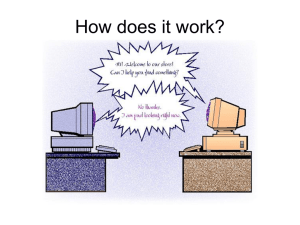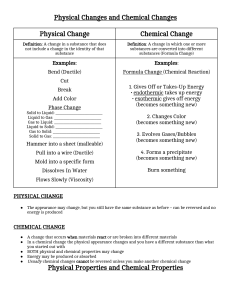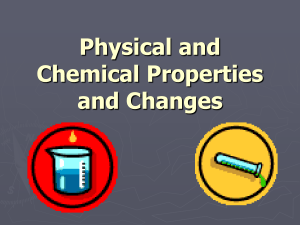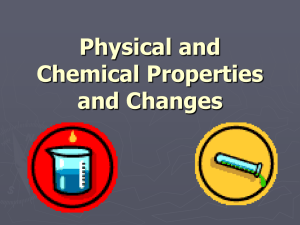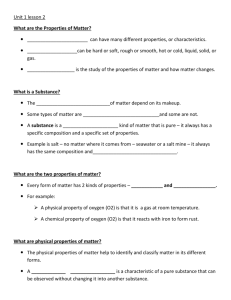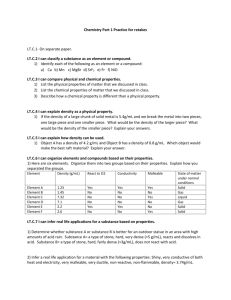Chemical & Physical Properties
advertisement
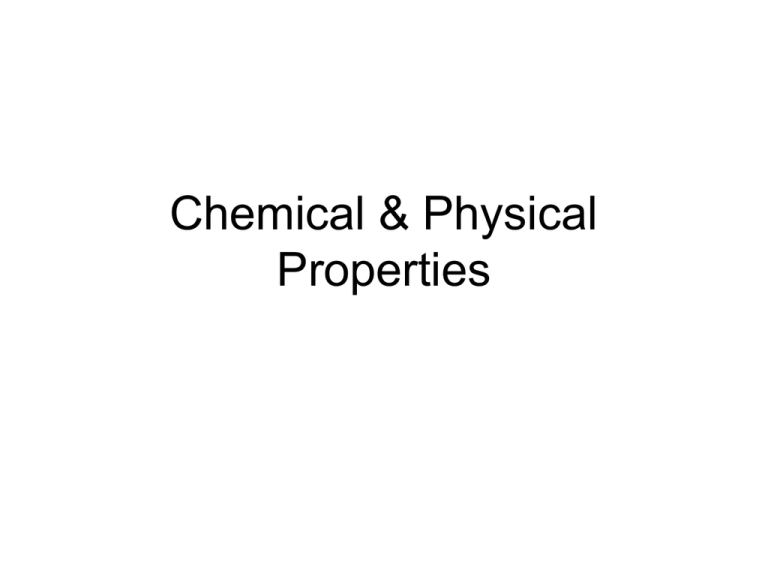
Chemical & Physical Properties Physical Properties Properties that are unique for each substance and are used to identify the substance itself Physical state Color Odor Texture Clarity Luster Form Hardness Brittleness Malleability Ductility Viscosity Melting point Boiling point Density Chemical Property Properties of a substance that we observe when it reacts or does not react with other substances Ability to react with oxygen iron rust in moist air; gold doesn’t Ability to burn hydrogen burns in oxygen but nitrogen doesn’t Ability to react with acid Zinc reacts with acid; but glass doesn’t Physical Change No new substance is produced Substances remains the same even with a change of state May involve the addition of energy or release of energy Outside may look different, Particles may be rearranged but the substance is still the same. Physical Change - Examples Mixing sugar and water Ice melting into water Solid wax to liquid wax Changing shape Chemical Change Final substance is substantially different than initial substance New substance is always produced Energy is usually released but may be required to get the change going Signs of a Chemical Change Forming of Gas Forming of a solid (precipitate) Release or absorption of energy Color change Chemical Change - Examples Vinegar and baking soda mix to form carbon dioxide Iron and oxygen and water react to form rust


